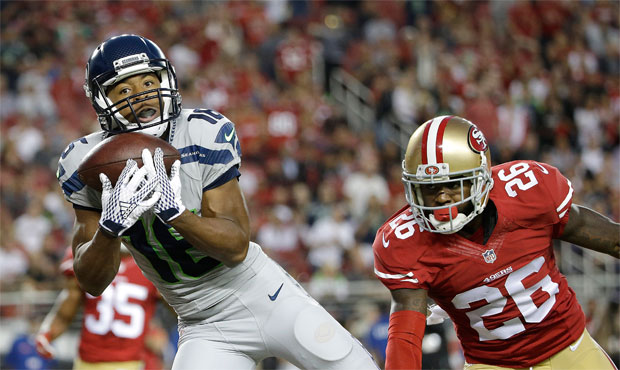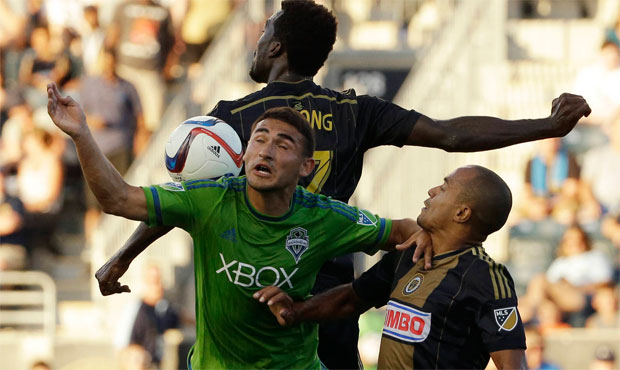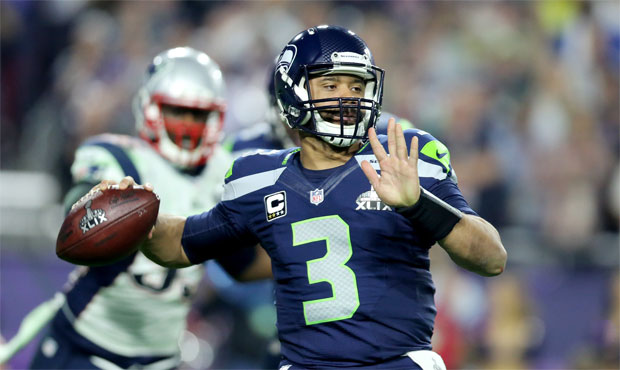Brady Henderson
ESPN’s Todd McShay names some early-round OL options for the Seahawks
With four picks among the first 100 selections and an offensive line that remains a work in progress, the Seahawks have both ammunition and incentive to depart from their recent trend of waiting until the middle and later rounds of the draft to address that position.
ESPN draft analyst Todd McShay, a guest on “Brock and Salk” earlier this week, shared his thoughts on some offensive linemen that could appeal to the Seahawks if they do indeed target that position early.
Barring a trade up, the Seahawks won’t pick until No. 26 overall, by which point McShay expects at least three and probably four tackles to be off the board. He predicts Laremy Tunsil (Ole Miss), Ronnie Stanley (Notre Dame) and Jack Conklin (Michigan State) will all be chosen in the first half of the first round. Taylor Decker (Ohio State) is the next best tackle in McShay’s view, but he doesn’t think Decker will last until No. 26.
That would leave the Seahawks with their choice of what McShay called two second-tier tackles, Germain Ifedi from Texas A&M and Jason Spriggs from Indiana.
McShay said Ifedi (6 feet 6, 324 pounds) is “very good in pass-protection because he’s long and balanced” but noted that he’ll face an adjustment having played in a spread offense.
“Coming from A&M, he’s got to learn how to get in a three-point stance and fire out and run-block,” McShay said, “but you can say that for a lot of these guys; it’s just how the college game is going.”
Follow the latest Seahawks news with our free-agency tracker
McShay said Spriggs (6-6, 301) “moves really well” and that he “has all the numbers you look for,” including a time of below 5 seconds in the 40-yard dash.
“The tape was a little inconsistent,” McShay said, “but if you feel like you have a good coaching staff, a good offensive-line coach, there’s a lot to work with there.”
The Seahawks signed a pair of tackles in free agency after losing starter Russell Okung. As it stands now, J’Marcus Webb is penciled in to start on the right side. On the left side, Bradley Sowell will compete with Garry Gilliam, who’s moving over from right tackle after starting there last year.
That all seems to be fluid, though. The contract the Seahawks gave Webb suggests they expect him to start. But his experience at guard would give the Seahawks the option of moving him inside if they aren’t satisfied with incumbent starter Justin Britt and/or Mark Glowinski, who’s the leading candidate to replace J.R. Sweezy after he, too, left in free agency. The Seahawks gave center Patrick Lewis a restricted-free-agent tender worth $1.617 million, but that money isn’t guaranteed.
All of which means the Seahawks could conceivably use an early draft pick on any offensive-line position. In addition to No. 26, Seattle has the 56th (second round), 90th (third) and 97th (third) picks. But if they’re going to take a tackle, McShay is of the belief that it’s better to do so in the first round, generally speaking.
“If you’re drafting in the second round for offensive tackle, it means there’s work that has to be done but there’s probably tools to develop,” he said. “Then you start to get into the guys like Jerald Hawkins from LSU (6-5, 305), Shon Coleman from Auburn (6-5, 307), Le’Raven Clark from Texas Tech (6-5, 316). But ideally, as is always the case, you’d like to be able to find your guy at tackle in the first round because they go quickly.”
As for interior offensive linemen, McShay believes the top three guards in this year’s draft are Cody Whitehair of Kansas State (6-3, 301), Puyallup native Joshua Garnett of Stanford (6-4, 312) and Christian Westerman from Arizona State (6-3, 298). He doesn’t share the belief of some other draft analysts that Whitehair is a first-round talent and said of those three, “You’d really like to be able to get them in Round 2.”
But he identified Whitehair as the most versatile offensive linemen in this year’s draft and noted that he would fit well in a zone-blocking system, which is what the Seahawks run.
“He’s played left tackle. He can kick into guard. I actually think, the more I watch him, he might be best suited to play at center at 6-3 1/2, 300 pounds,” McShay said. “I think that’s part of the intrigue is that you can play him at multiple spots. I think he fits best for a team, though, that is more zone blocking. Not an overpowering blocker, but very good positional blocker and with technique.”

























Comments